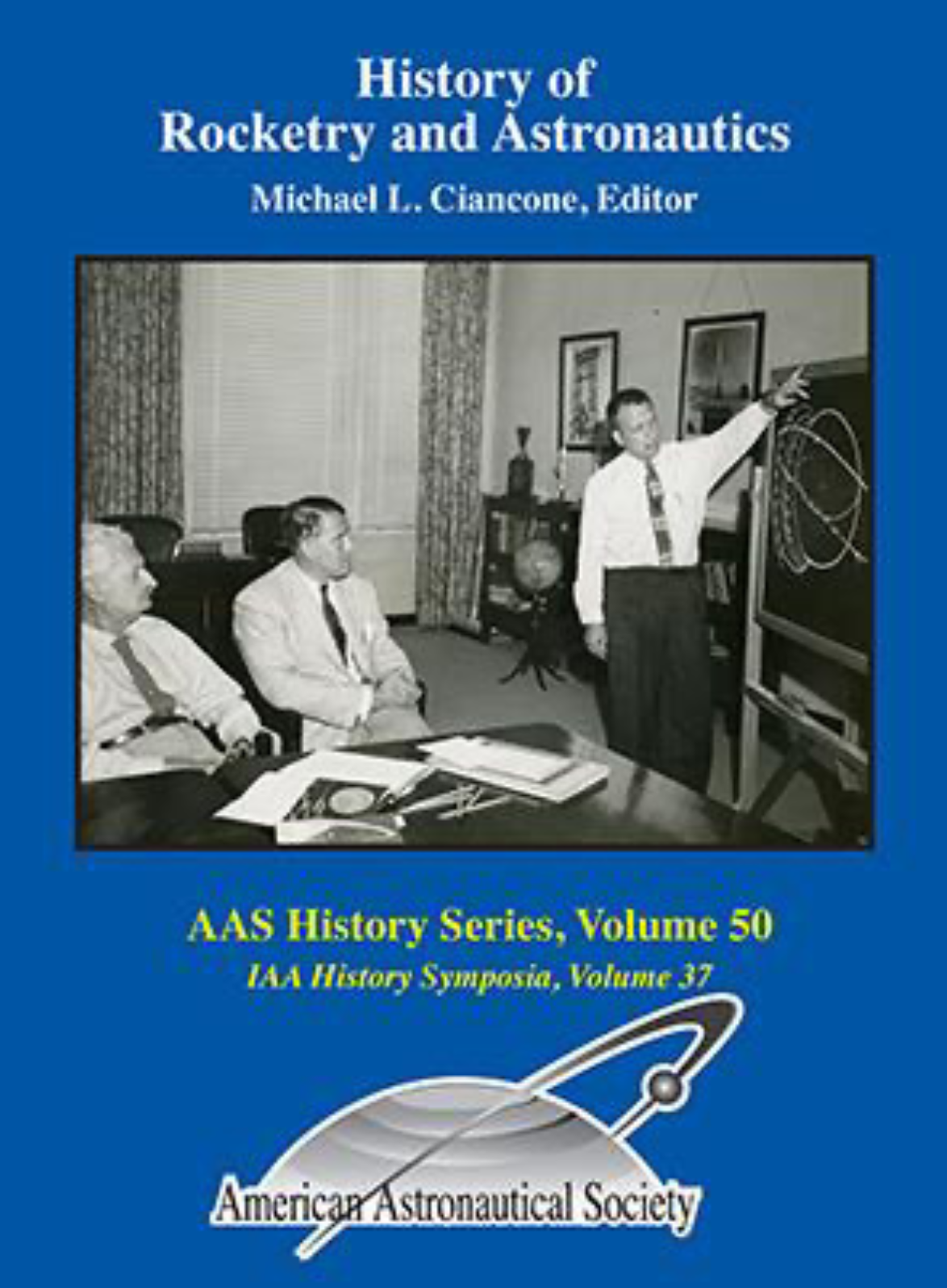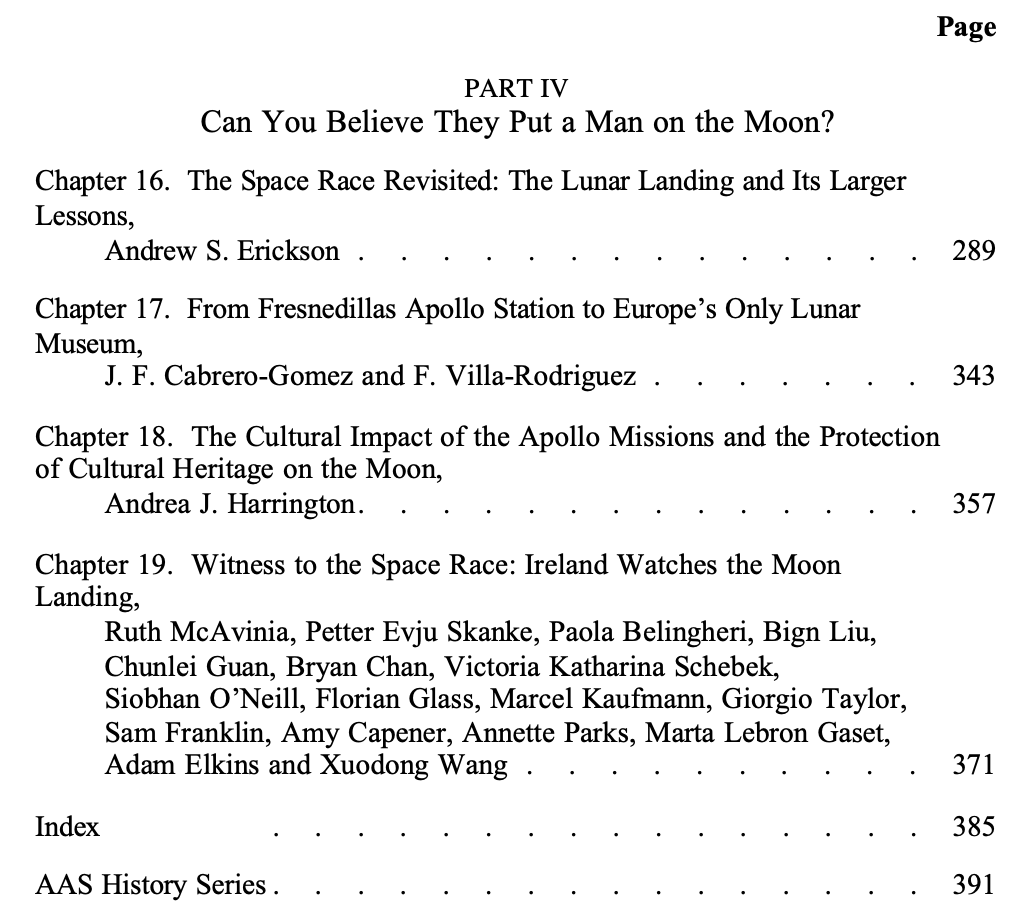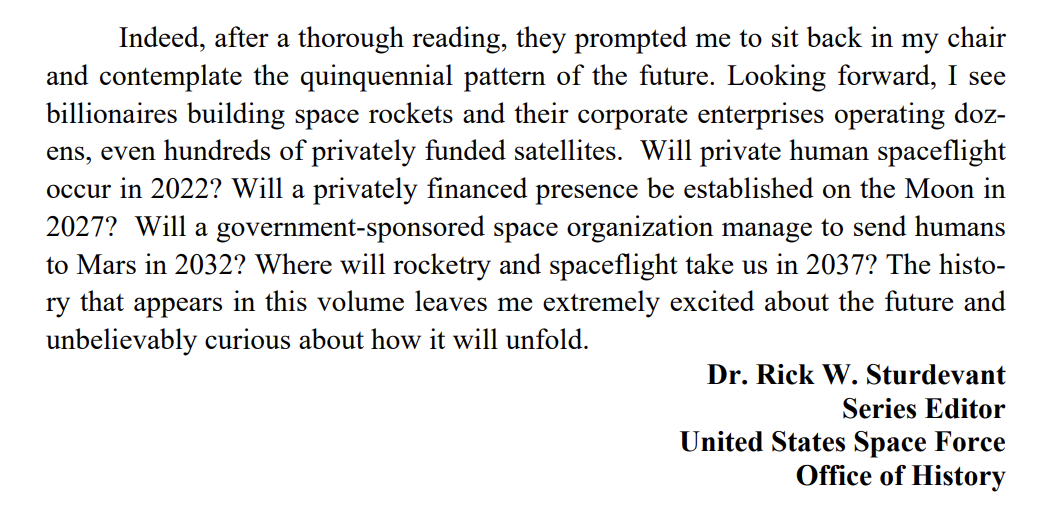The Space Race Revisited: The Lunar Landing and its Larger Lessons
Andrew S. Erickson, “The Space Race Revisited: The Lunar Landing and its Larger Lessons,” in Michael L. Ciancone, ed., Proceedings of the Fifty-first History Symposium of the International Academy of Astronautics, American Astronautical Society (AAS) History Series, Vol. 50 (San Diego, CA: Univelt, 2020), 289–342.
Chapter 16
The Space Race Revisited:
The Lunar Landing and Its Larger Lessons*
Andrew S. Erickson†
* Presented at the Fifty-First History Symposium of the International Academy of Astronautics, September 25–29, 2017, Adelaide, South Australia. Paper IAC-17-E4.3B.1. The views expressed in this chapter are those of the author alone. They do not represent the estimates or policies of the US Navy or any other organization of the US government. Unless otherwise specified, all interviews cited were conducted by the author himself. In addition to the interviewees, he thanks Michael Ciancone, Philippe Cosyn, Craig Covault, Dorothy Gavin, Joseph Gavin, III, Michael Gruntman, Stephen Johnson, Michael Petersen, Asif Siddiqi, and Rick Sturdevant for invaluable inputs. For a related version of the present argument with substantially different content, see Andrew S. Erickson, “Revisiting the U.S.-Soviet Space Race: Comparing Two Systems in Their Competition to Land a Man on the Moon,” Acta Astronautica 148 (July 2018): 376–84.
† Professor of Strategy, United States Naval War College; Visiting Scholar, John King Fairbank Center for Chinese Studies, Harvard University, Cambridge, Massachusetts 02138, United States.
Abstract
The Cold War space competition between the United States and the Soviet Union, centered on their race to the Moon, offers both an exceptionally revealing historical case and larger implications for space and technology development and policy. Moscow’s capabilities appeared to eclipse Washington’s in the late 1950s under Premier Nikita Khrushchev’s direction and Chief Designer Sergei Korolev’s determined implementation. This called the international system’s very nature into question, prompting President John F. Kennedy to declare a race to the Moon and Lyndon B. Johnson to pursue this legacy with masterful political mobilization. Despite its talented specialists and ambitious goals, in the centralized but under-institutionalized USSR feuding chief designers playing bureaucratic politics promoted a cacophony of overambitious, overlapping projects. It suffered from poor quality control at outlying factories and failed to sustain its lead. In marked contrast, American private corporations, under NASA’s well-coordinated guidance and adjudication, helped the United States overtake from behind to meet Kennedy’s deadline in 1969. In critical respects, Washington’s lunar landing was the product of an effective systems management program, while Moscow’s moonshot succumbed to the Soviet system, which proved wholly unequal to the task. In less than a decade, Soviet space efforts shifted from one-upping, to keeping up, to covering up.
This chapter will review and reconsider this fascinating history to suggest larger conclusions and implications. Among them: technological development is shaped by the national system and conditions under which it occurs, because modern organizations must develop standardized rules and procedures to create and sustain the bureaucracies that coordinate it. Mobilizing sufficient resource itself is challenging, but even astronomical resources themselves cannot ensure space success, which at its highest levels of scope and sophistication offers a comprehensive test of not only specific programs, but also of the processes and capabilities of the organizations and nation(s) that support them. As a particularly important example, systems management proved itself in the Apollo Moon-landing program, and remains one of the most successful mechanisms for high technology development.
I. Cold War Microcosm: Overall Dynamics of the “Fluid Front”
As the hindsight of centuries accumulates and events recede into the rearview mirror of history, perhaps the key event that will emerge from the twentieth century is humanity’s first extra-terrestrial footsteps on the Moon. How humans came to transcend their Earthly bounds is of inherent interest and importance, which may only grow with time. To historians, at least, the larger cosmic contest that propelled and shaped this feat offers a case study of enduring fascination, unique in some respects, but nevertheless offering larger lessons. Already, the perspective and information that has emerged in the ensuing half-century underscores the extraordinary dynamics of the US-Soviet space race that launched a Moon race as its central contest. Following the second of two global wars, the technological spoils of then-leading technological power Germany were divided among the two remaining superpowers; here America seized a decisive advantage over its emerging rival. In a spurt of social mobility and human capacity mobilization unsurpassed before or since, talented American and Soviet strivers from the most modest and remote of backgrounds competed to become some of their space programs’ top leaders, engineers, and astronauts. European refugees provided America and its space program further world-class talent, with Austrian-émigré-turned-NASA-Administrator George Low among the many striking successes. At the time, some of the greatest and most fundamental questions seemed to hang in the balance: what would be the prospects for peace and human survival, how societies around the world would organize and govern themselves, and how vast new technological and physical frontiers might soon unfold. In retrospect, however, the overall dynamics are clear: because of its self-limiting system, the USSR could not defeat a determined American challenge. Ultimately, it could not even survive, disintegrating completely in 1991. … … …
VOLUME INFORMATION:
Volume 50 of the AAS History Series
History of Rocketry and Astronautics
Proceedings of the 51st History Symposium of the International Academy of Astronautics (IAA)
Adelaide, South Australia, 2017. Pub. 2020, 412pgs. Ed. Michael L. Ciancone. Includes CDROM containing full text in pdf format
Hard Cover. 978-0-87703-667-8.
Price: $95.00








































